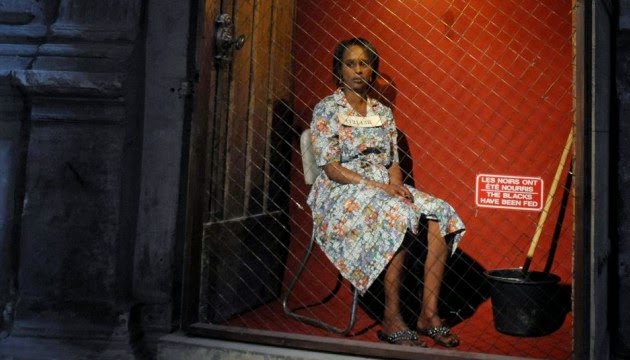 |
| Telling it like it is |
The undeniable rise of the comic as a respected and widely enjoyed art form has been gathering pace over the last decade; comic artists are starting to enjoy accolades and a well-deserved recognition hitherto unknown. This blog has already written about some of the comic books we have come across in the past and we intend to keep doing so in the future. The wealth of talent and creativity remains huge so there is no excuse, really.
Joe Sacco is a Maltese-US citizen cartoonist and journalist; an intriguing combination that, one would imagine, could produce a more than interesting result.And this is exactly what happens with Sacco's work.
A fascinating mix of his acute observation skills, his drawing talent and his desire to try to understand global conflicts (some of them with very little media coverage), make of Sacco a unique comic-reporter whose work, dare I say, becomes compulsory reading for anyone with an interest in the world we live in.
On top of that, he always manages to portray realities that bring us a different perspective and may even challenge our -- as well as his own-- beliefs and assumptions.
Journalism is in reality a collection of short comics Sacco published over the past years in different magazines (eg The New York Times Magazine, Harper's Magazine or the French XXI).
The book opens with a preface that is a masterpiece in journalism and should be read by aspiring journalists; in it, he challenges the much-vaunted term 'objectivity'; or as he calls it, the Holy of Holies of American (should he add British, too?) journalism.
What follows this edifying piece is a whirlwind tour around the hotspots on the map of conflicts; from Bosnia to Palestine; from the Indian dispossessed to the refugees arriving in his native Malta.
In true Sacco's fashion, he is another character in the stories and he depicts himself as the man he is in all circumstances. His presence and questions are often a risk for his witnesses who are very vulnerable, and he does not hide the fact that he is not always welcome.He can also be irritatingly annoying.
However, he manages to portray with astonishing yet compassionate objectivity the plight of the Chechen women; the humiliations suffered by the Iraqi recruits trained by the US army; the desperate no-man's land of the refugees arriving in Malta; and the harrowing conditions of the untouchable in India.
Heartbreaking, powerful and informative, this book reveals many dark stories, touches complex realities and defies stereotypes.It deserves a wider audience.






